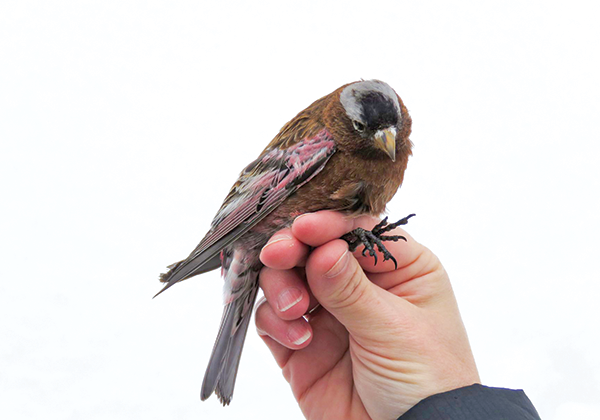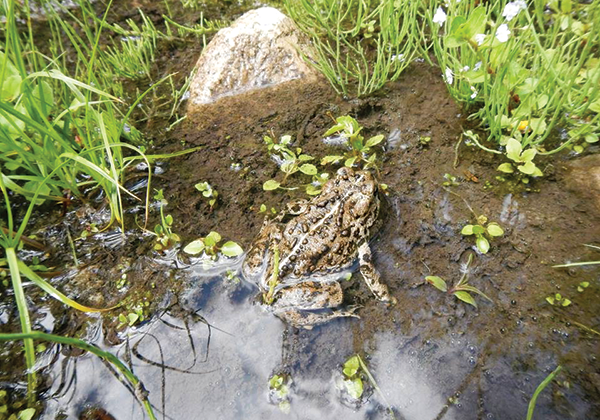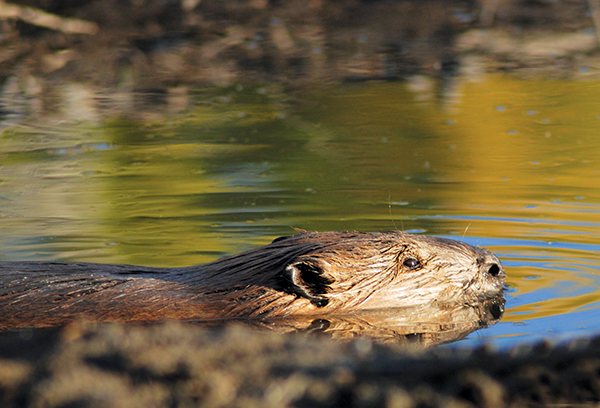The Wild Utah Project takes a science-based approach to conservation
Those of us in Salt Lake City who love the outdoors are spoiled. Living snugly beside the mighty Wasatch Range, we see wildlife in our neighborhoods and jog across ecologically diverse lands before or after work, not fully realizing that this is not the norm in most American cities.
Because we’re so close to the land and its recreational opportunities, organizations that support conservation and protect wildlife and the wilderness have become integral members of our community, with many working toward easing the strain between human development and the environment.
It’s not an easy job. In our current political climate, long-standing environmental policies and protections are under attack. If the fight over Bears Ears National Monument is any indication, Utahns who recreate on public lands will see dramatic shifts in national legislation and policies. Yet, despite political threats and shifting sands, Utah organizations and nonprofits continue to champion their environmental causes.

Allison Jones, executive director of the Wild Utah Project
Take the Wild Utah Project (WildUtahProject.org), for example. The organization provides nonprofits and public agencies with research and mapping services to promote conservation. Through grant-funded studies and partnerships, Wild Utah’s team of conservation biologists gather data across the state and study the effects of development, recreation and climate change on wildlife species such as the boreal toad, black rosy-finch and beavers.
“Wildlife are in a tricky spot in Utah right now,” Allison Jones, executive director of the Wild Utah Project, says, “and it’s only going to get worse.” Jones began her tenure at the Wild Utah Project in 1999 as a conservation biologist. In that time, she’s seen the decline of the boreal toad population.

How rosy is the future of the black rosy-finch?
Boreal toads used to be common along the Rockies, from northern New Mexico to British Columbia, and then farther north into Alaska. They thrive in wet alpine environments such as the high-elevation streams of the Wasatch. One reason for their decline may be due to the chytrid fungus, which causes a skin disease in many species of amphibians. Another reason could be loss of habitat.
Jones explains that boreal toads are an indicator species and their decline in the otherwise ideal habitat of the Wasatch has implications for all of us in the Salt Lake Valley.

More data is needed to know why Utah’s boreal toads are in decline
“We have an exploding [human] population on the Wasatch Front,” she says. Not only that, but the impacts of climate change are both frightening and hard to model. “History is no longer a predictor of the future.”
This is also the case of the black rosy-finch whose buzzy-sounding call, or chew, echoes across the high-alpine peaks of Mount Baldy and Olympus. Prior to Wild Utah’s new project, the future of this species was difficult to plot due to a lack of data.
“They might be impacted by climate change,” Jones says, referring to the warming of high alpine environments that the black rosy-finch needs to survive, but a lack of information prevents scientists from knowing how far-reaching those impacts may be.

Wild Utah works to restore stream and riparian habitats, even building human-made beaver dams, in hopes that beaver can return where it is feasible to do so
High-altitude environments aren’t the only impacted areas. Wild Utah’s most recent project—in conjunction with several other groups, is the Wasatch Wildlife Watch, which gathers data from 200 camera stations along the upper Salt Lake valley, foothills and Central Wasatch Mountains to determine the “presence or absence of species, abundance and distribution, movement corridors and pinch points for wildlife in the Wasatch,” Jones says. With this data, Wild Utah Project will use geographic-information-system (GIS) mapping to overlay the anthropogenic impacts across the Wasatch.
“What is it about human presence in the foothills where species suddenly disappear?” Jones asks. “Is it recreation? Housing? Roads?” Data collected from the Wasatch Wildlife Watch will increase knowledge about human impacts on the Uinta-Wasatch-Cache National Forest and will be used by the Central Wasatch Commission, Little Cottonwood Canyon and the Forest Service for travel planning, trail improvements and environmental planning after each season of collecting data.
Wild Utah Project funds its share of the Wasatch Wildlife Watch using general operating grants, but the project wouldn’t be possible without the work of a driven University of Utah Ph.D. candidate, Austin Green, and an army of volunteers. In fact, it’s the volunteers who help collect the massive amount of data required for Green to interpret and present as his thesis on how development affects mammals along the Wasatch Front.
So why does Jones remain optimistic in the face of a changing climate and human impacts on fragile environments? “Everyone in nonprofit conservation groups [and] federal and state agencies have their nose to the ground,” she says. “We’re all doing the best we can with the tools we have.”
She believes that upcoming generations will get a clue before it’s too late. “I think there’s a glimmer of hope,” she says.



